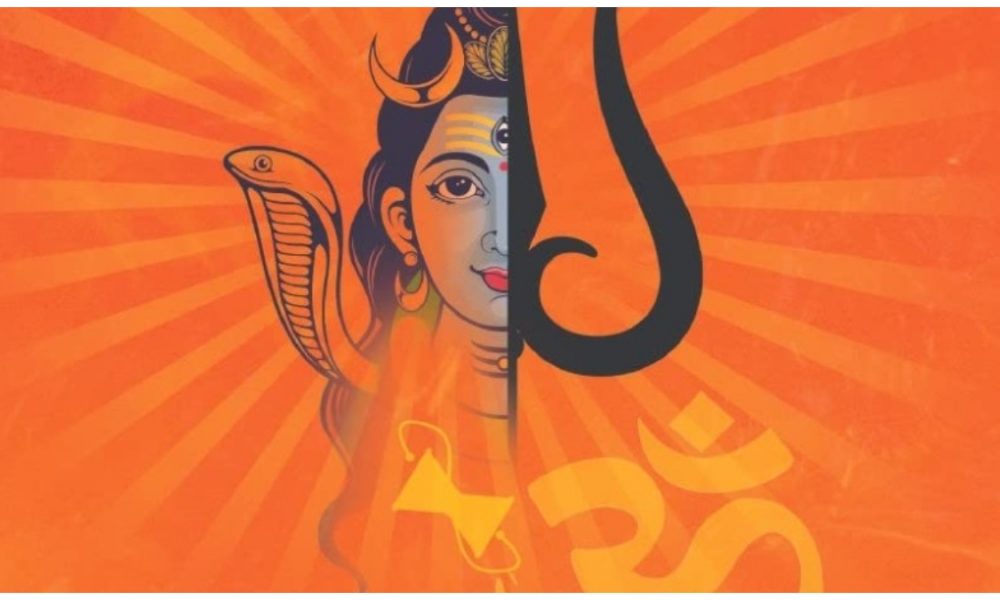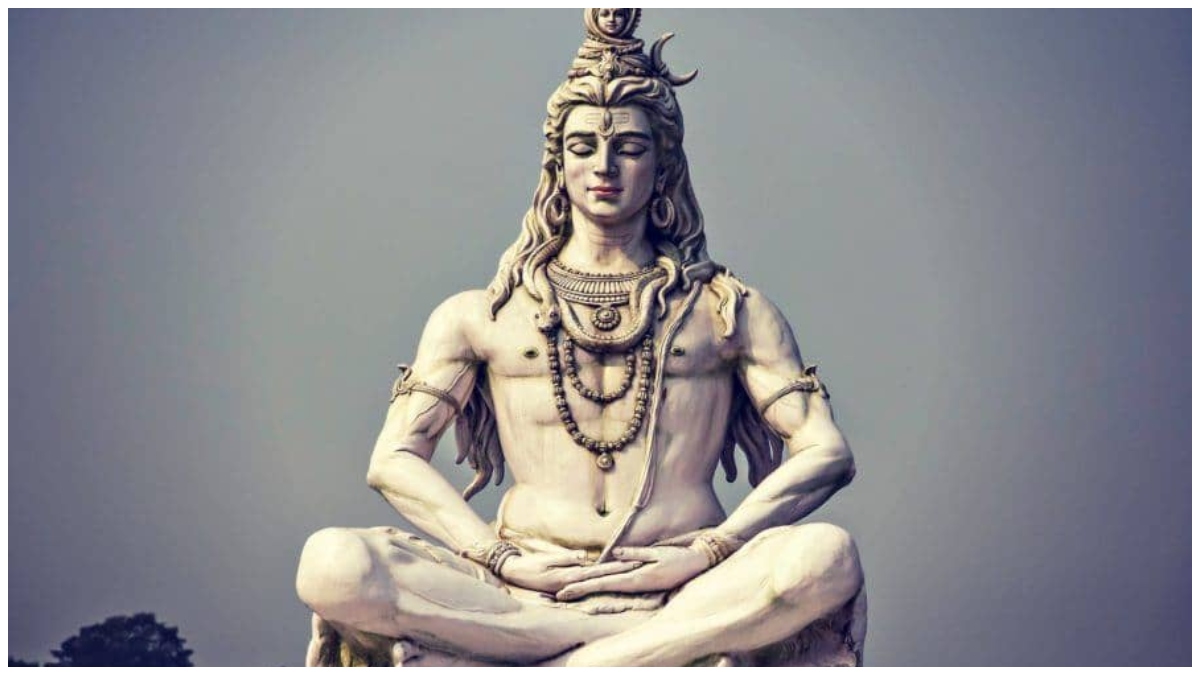
New Delhi: Anshul Pandey’s book “The Authentic Concept of Shiva” is an excellent attempt to fill the ‘Gagar Mein Sagar’ with authentic information about Bhagavan Shiva
Thinking about Mumbai, the city of dreams, creates varied messages in your head of lilting voices of film songs, the Stock market, the Ocean, milling crowds, etc. But these images vanished when the name of young popular budding Author & Columnist Anshul Pandey cropped up.
Lately, a book named “The Authentic concept of Shiva” written by this talented young man is becoming popular, helped me shake off the idea of my mindset about Mumbai. I never ever thought that this young lad staying in this city of dreams will write a book on Shiva based on scriptures. This book written by Anshul Pandey is published by the renowned publisher Garuda Prakashan. This book is a trove of much new information. Many things about Shiva hitherto remained unknown. The time is ripe to let everyone know these important things.
So many myths about Shiva are present in the public domain which need to be refuted soon like people believe that Shiva use to intoxicate Charas and Ganja. No scripture has ever mentioned this wrong thought, This is only there in WhatsApp forwards. We need to change this concept sooner rather than remaining aloof.
This book has forewords by three eminent personalities, like famous Author and former MHA official RVS Mani, Dr. Manoj Singh, and the renowned founder of Sattology Shri Aditya Satsangi based in the USA. And of course, it also contains the divine blessings of his Guru.

Author Anshul Pandey, who believes in the Guru Shishya tradition, has written many facts hitherto unknown to me. Many interesting facts emerged from this book. Shiva is Omnipotent, Omniscient, Omnipresent, easily gratified, innocent, and immortal. His demeanor and appearance are described in many ways. Author Anshul Pandey has selected meaningful subjects and made an attempt to produce concise content in his very first book.
The first chapter describes Shiva in Vedas and Upanishads, He has also given Vedas reference where it is mentioned Shiva and Amba are husband and wife (This thing is already mentioned in Vedas). He has mentioned there are more than 160 Mantras of Bhagwan Shiva mentioned in Vedas
In the second chapter he debunked the Misconceptions related to Shiva Lingam, these days many Hindu haters say that Hindus worship Phallus or the Private part but that is not the fact. He has debunked it with examples from Vedas and other scriptures, He said that its real meaning is Symbol or Chinha. Also, Maheshwar and Brahm Bhaav are explained in the context of Sagun(visible) and Nirgun(invisible).
The third chapter deals with types of Lingam and as per the advice of Brahma, what type of and in what material Vishwakarma builds the Lingam.
The fourth Chapter is a milestone, where he mentions 96 avatars of Shiva is concerned. No, where this type of information is available. The author has thoroughly researched many scriptures and found that there are ninety-six avatars of Shiva. This painstakingly done research is the most important part of this book. Gorakhnath, Shukdev, Martand, Aghor, and Adi Shankracharya too are considered Shiva avatars.
Not only Shiva Puran but other books like Garga Samhita, Bhavishya Puran, Mahabharat, etc were also referred to. Incidentally, the Author also mentions twenty-nine avatars of Bhagwan Vishnu, whereas we only thought it to be Dashavtaar. I was surprised to see Balaji, Harihar, Varahi, Jogi, and Chaitanya Mahaprabhu Avatar.
In the fifth chapter, Shiva is described as Yogeshwar, as he is Adi Yogi and the origin of Yog is through him. Special mention here is of Maheshwar Yog. To reach the top or attain Moksha, all the rules are described.
The sixth chapter deals with the name Pashupati. Shiva once had told the Devtas that Tripur can only be defeated if he is made the chief of all the Pashu. Abhinav Gupt is associated with rendering a name to Natyashashtra but the originator of Natya is Shiva. Therefore he is Natraj.
In his book Natyashastra, Bharat muni describes how the Natya Kala came into existence. Natya Ved was created by bringing out, the relevant elements from all four Vedas. This then was enacted by the Son of Bharat muni and Apsaras. But it lacked the dance form. Shiva is therefore linked to this form due to his adopting the nritya form, especially on Pradosh evenings.
In the eighth chapter, Shiva is described as the Guru of Mansa Devi and Parshuram. The ninth Chapter describes the Shivansh or a part of Shiv as they cannot be considered as Avataras. Here apart from Andhak and Jalandhar, Mangal and Jwar are also known as Shivansh.
In the tenth chapter, Shiva is described as the Originator of Aghor Panth. Vednidhi Bhairav, born not out of the womb at Kapal Mochan in Kashi, is supposed to be an Avtar of Shiva. The eleventh chapter reiterates the point that each of Tridev is equally important. They dislike comparisons as they have mutual respect for each other. The twelfth chapter says that although Bhagwan Vishnu was associated with Sudarshan Chakra, it was gifted to him by Bhagwan Shiva.
The thirteenth chapter puts forth a new idea of Kailash and Mahakailash. The real abode of Shiva is not Kailash but it is Mahakailash. The fourteenth chapter is about the entire Shiva family. Ashok Sundari as his daughter is a new concept that I never heard but he has given reference from Puranas. Likewise many forms of Shakti manifestations have been also written.
The fifteenth chapter describes 12 types of Shaivism, For eg Kapalikpanth, Aghoris, Naga Sadhus, Nath Sampraday, etc. Each sect has its own method of worship. The Author has put up interesting facts about their worship form.
The sixteenth chapter describes the origin of the favorite city of Shiva i.e Varanasi, also known as Avimukt Nagri, and its place during Pralay and creation. The seventeenth chapter describes the favorite Lingams of Shiva. The eighteenth chapter describes the famous temples of Shiva all over. A special mention of Panch Kedar is also mentioned. The nineteenth chapter describes Shiva as the originator of the Sanskrit and Tamil languages. He has given the whole hierarchy of Tamil language thought by Shiva to Rishi Agastya.
The twentieth chapter describes the importance of the Mahamrityunjay mantra and its real meaning as per the Scriptures. The twenty-first chapter describes the magical influence of five worded Panchakshri mantra Om Namah Shivay and its effect on us and how to chant it as per the Scriptures. The Twenty-second chapter describes the 12 Jyotirlingas in detail. Twenty third chapter describes the origin of Rudraksha and its rules and effect.
The twenty-fourth chapter is about Bhasm, Tripund (Shiv tilak), and Aghor. There is a big misconception that Bhasma means Shamshan Ash but there are other types of Bhasmas too mentioned in our scriptures. He also explains the meaning of Tripund and its importance.
The final chapter of this book is very contemporary. Today contraband things like narcotics have reached an explosive state. The people consuming these intoxicants give the example of Shivji as the consumer of cannabis and other intoxicants. Shiva sits meditating about Vishnu all the time. How can one think of him as a drug consumer? Shiva has nothing to do with these anti-religious things. The consumer of intoxicants wants to hide his weakness in the name of Shiva. They are only insulting Shiv bhakts by doing this. They are either ignorant or doing this Knowingly.
In his very first book, Author Anshul Pandey has picked up material from Sanatan scriptures which just seem like pouring an Ocean in a pot. This will bring the Bhakt nearer to Shiva. The author has produced authentic proof. Every child should read this. The language of the book is very simple English. If today’s youth is writing books on such subjects, I am convinced about the future of Sanatan Dharma.
The publishers should also make a sincere attempt to popularise the book in rural areas of Bharat.




